[Broadway Ad Network]
[Broadway Ad Network]

TICKET / INFO
- StudentRush
- New York Show Tickets
- Givenik.com
- Telecharge.com
- Ticketmaster.com
- Group Sales Box Office
- Frugal TheaterGoer
- Broadway for Broke People
- Playbill's Rush/Lottery/SR
- Seating Charts
COMMUNITY
NEWS
- Back Stage
- Bloomberg
- Broadway.com
- BroadwayWorld
- Entertainment Weekly
- NYTheatre.com
- New York Magazine
- The New York Daily News
- The New York Post
- The New York Times
- The New Yorker
- Newsday
- NiteLife Exchange
- Playbill
- Show Business Weekly
- The Star-Ledger
- Talkin'Broadway
- TheaterMania.com
- Time Out New York
- American Theatre Magazine
- Theatre Development Fund (TDF)
- Best of Off-Broadway
- The Village Voice
- Variety
- The Wall Street Journal
- Journal News
REVIEWS
- The New York Times
- Variety
- New York Post
- NY1
- Aisle Say
- CurtainUp
- DC Theatre Scene
- Show Showdown
- Stage and Cinema
- StageGrade
- Talk Entertainment
- TotalTheater.com
- Off-Off Broadway Review
- TheaterOnline.com
- TheaterScene.net
- TheaterNewsOnline.com
WEST END
- The Stage
- 1st 4 London Theatre Tickets
- Book Your Theatre Tickets
- Compare Theatre Tickets.co.uk
- Theatre.com
- Whatsonstage.com [UK]
- ATW - London
- Musical Stages [UK]
- Albemarle of London
- Londontheatre.co.uk
- Google News
- Show Pairs
- ILoveTheatre.com
- The Official London Theatre Guide
- UK Tickets
BOSTON
CHICAGO
LA/SF
COLUMNS
- Peter Bart
- Andrew Cohen
- Ken Davenport
- Tim Dunleavy
- Peter Filichia
- Andrew Gans
- Ernio Hernandez
- Harry Haun
- Chad Jones
- Chris Jones
- James Marino
- Joel Markowitz
- Matthew Murray
- Michael Musto
- Ellis Nassour
- Tom Nondorf
- Richard Ouzounian
- Michael Portantiere
- Rex Reed
- Michael Riedel
- Frank Rizzo
- Richard Seff
- Frank Scheck
- Mark Shenton
- John Simon
- Robert Simonson
- Steve on Broadway (SOB)
- Steven Suskin
- Terry Teachout
- Theater Corps
- Elisabeth Vincentelli
- Hedy Weiss
- Matt Windman
- Linda Winer
- Matt Wolf
PODCAST
RADIO
TV
- Theater Talk
- BlueGobo.com
- Classic Arts Showcase
- American Theatre Wing Seminars
- Women in Theatre
- NY1
- WCBS [2]
- WNBC [4]
- FOX [5]
- WABC [7]
- WWOR [9]
- WPIX [11]
- Channel 13
- Hulu
- YouTube
AWARDS
- Tony Central
- Oscar Central
- Tony Awards
- Drama Desk Awards
- The Drama League Awards
- Lortel Awards
- Academy Awards
- Emmy Awards
- Grammy Awards
- GoldDerby
DATABASE
- Internet Broadway Database
- Internet Off-Broadway Database
- Internet Movie Database
- Internet Theatre Database
- Musical Cast Album Database
- [CastAlbums.org]
- Show Music on Record Database (LOC)
- CurtainUp Master Index of Reviews
- Musical Heaven
- StageSpecs.org
ROAD HOUSES
- Gammage [AZ]
- Golden Gate [CA]
- Curran [CA]
- Orpheum [CA]
- Community Center [CA]
- Civic [CA]
- Ahmanson [CA]
- Pantages [CA]
- Temple Hoyne Buell [CO]
- Palace [CT]
- Rich Forum [CT]
- Shubert [CT]
- Bushnell [CT]
- Chevrolet [CT]
- Broward Center [FL]
- Jackie Gleason [FL]
- Fox [GA]
- Civic Center [IA]
- Cadillac Palace [IL]
- Ford Center/Oriental [IL]
- The Bank of America Theatre [IL]
- Auditorium Theatre of Roosevelt University [IL]
- Kentucky Center [KY]
- France-Merrick [MD]
- Colonial [MA]
- Wilbur [MA]
- Charles [MA]
- Wang [MA]
- Wharton Center [MI]
- Whiting [MI]
- Fisher [MI]
- Masonic Temple [MI]
- Orpheum, State, and Pantages [MN]
- Fabulous Fox [MO]
- New Jersey PAC [NJ]
- Auditorium Center [NY]
- Proctors [NY]
- Shea's PAC [NY]
- BTI Center [NC]
- Blumenthal PAC [NC]
- Schuster PAC [OH]
- Playhouse Square [OH]
- Aronoff Center [OH]
- Ohio [OH]
- Victoria Theatre [OH]
- Birmingham Jefferson [OH]
- Merriam Theater [PA]
- Academy of Music [PA]
- Benedum Center [PA]
- Providence PAC [RI]
- Orpheum [TN]
- Hobby Center [TX]
- Music Hall [TX]
- Bass Hall [TX]
- Paramount [WA]
- Fox Cities PAC [WI]
- Marcus Center [WI]
- Weidner Center [WI]
FESTIVALS
- The New York International Fringe Festival
- The American Living Room Festival
- Summer Play Festival
- The New York Musical Theatre Festival
- Adirondack Theatre Festival
- NAMT: Festival of New Musicals
SPECIAL
- BC/EFA: Broadway Cares / Equity Fights AIDS
- The Actors' Fund
- Stage Directors and Choreographers Foundation
EDUCATION
- Google Shakespeare
- Actor Tips
- AACT
- ArtSearch
- Broadway Classroom
- Broadway Educational Alliance
- Camp Broadway
- Great Groups - New York Actors
- Theatre Communications Group (TCG)
- Theatre Development Fund (TDF)
- Off-Broadway Theater Information Center
UNIONS/TRADE
- AEA
- SAG
- AFTRA
- AGMA
- The League
- APAP
- Local 1
- ATPAM
- IATSE
- AFM
- AFM - Local 802
- Treasurers & Ticket Sellers Union
- DGA
- Dramatists Guild
- USA 829
- WGA, East
- WGA, West
- SSD&C
- AFL-CIO
- League of Professional Theatre Women
NYC NON-PROFITS
- Cherry Lane Theatre
- City Center
- Drama Dept.
- Ensemble Studio Theater
- Jean Cocteau Rep.
- Lark
- Lincoln Center Theater
- Lincoln Center for the Performing Arts
- Lucille Lortel Foundation
- Manhattan Theatre Club
- MCC
- Mint
- Pearl Theatre Company
- Public Theater
- Roundabout
- Second Stage
- Signature
- The Vineyard Theatre
- The York Theatre Company
REGIONAL
- Actors Theatre
- Alabama Shakespeare Festival
- Alley Theatre
- ACT
- American Musical Theatre in San Jose
- American Repertory
- Arena Stage
- Barrington Stage Company
- Bay Street Theatre
- Berkeley Rep
- Casa Manana
- Chicago Shakespeare Theater
- Cincinnati Playhouse
- CTC
- Dallas Summer Musicals
- Dallas Theater Center
- Denver Center
- George Street
- Goodman
- Guthrie
- Goodspeed
- Hartford Stage
- Hudson Stage Company
- Theatre de la Jeune Lune
- Kennedy Center
- La Jolla
- Long Wharf
- Lyric Stage
- Mark Taper Forum
- McCarter
- New Jersey Rep
- North Shore
- Old Globe
- Ordway
- Oregon Shakespeare
- Paper Mill
- Prince Music Theater
- The Rep (St. Louis)
- Sacramento Music Circus
- San Francisco Mime Troupe
- Seattle Rep
- Shakespeare Theatre Co. (DC)
- The Shakespeare Theatre of New Jersey
- South Coast Rep
- Steppenwolf
- Theater of the Stars (GA)
- Theater J (DC)
- Theater Under the Stars (TX)
- Trinity Rep
- Two River Theater Company
- Utah
- Victory Gardens
- Westport
- Williamstown
- Yale Rep
KEWL
Revisiting Life on that Wicked—and Wonderful—Stage by Matthew Murray
-
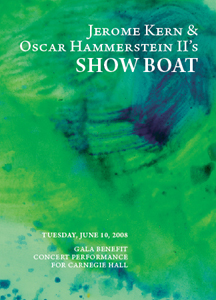 There are better ways to determine a show's lasting success than merely by the number of performances it played. Take, for example, the longest-running Broadway musical hit of the 1920s: Replete with colorful locales, resplendent music from a preeminent composer, an enormous cast, and a sumptuous production that stretched to the limits the pocketbook of the Main Stem's top producers. If you're a devoted musical theatre lover, you've almost certainly heard of this show. But chances are you haven't seen a production in ages (if ever), that you don't have a shelf full of recordings of it, and that it's probably been years since you've heard even the most backward-looking of singers take on one of its hit tunes.
There are better ways to determine a show's lasting success than merely by the number of performances it played. Take, for example, the longest-running Broadway musical hit of the 1920s: Replete with colorful locales, resplendent music from a preeminent composer, an enormous cast, and a sumptuous production that stretched to the limits the pocketbook of the Main Stem's top producers. If you're a devoted musical theatre lover, you've almost certainly heard of this show. But chances are you haven't seen a production in ages (if ever), that you don't have a shelf full of recordings of it, and that it's probably been years since you've heard even the most backward-looking of singers take on one of its hit tunes.Not that there's anything wrong with The Student Prince in Heidelberg. But when one ponders the most lasting legacy of Broadway in the 1920s, Sigmund Romberg and Dorothy Donnelly's 1924 operetta (which ran a then-amazing 608 performances) is usually subsumed in the wake of a pure-Broadway venture that, though it played 572 times in its original engagement, still won't stop rolling along: Show Boat.
Written by Oscar Hammerstein II (book and lyrics) and Jerome Kern (music), and produced by Florenz Ziegfeld, Jr., this landmark adaptation of Edna Ferber's 1926 novel of life aboard and around the floating stages of the Midwest represented musical theatre's first major step away from the broad camp of operetta and the comic larks that had long defined it. Not only integrating music, dance, and dialogue in an advanced way that had seldom before been seen onstage, Show Boat also integrated its company, with Caucasian and African-American performers appearing alongside each other to tell an epic story about race and romance as filtered through the experiences of one family sailing the Mississippi on their floating theatre, the Cotton Blossom.
Show Boat will celebrate its 81st year (it opened at the Ziegfeld Theatre on December 27, 1927) in grand style: with a gala Carnegie Hall concert on June 10, at 8:00 PM, to benefit Carnegie Hall's artistic programming and the music education initiatives of The Weill Music Institute at Carnegie Hall. The semistaged production will feature a cast of 50 musical theatre and opera talents, the direction of Francesca Zambello (currently represented on Broadway by The Little Mermaid), choreography from Robert Longbottom (Side Show), and the 50-piece Orchestra of St. Luke's playing Robert Russell Bennett's original orchestrations under the baton of Paul Gemignani. (To purchase tickets, click here.)
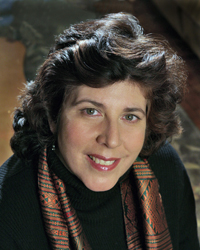 But though this event will give contemporary audiences a chance to hear Kern and Hammerstein's hit-packed score in all its sweeping glory, the show itself won't quite be one that even dedicated devotees are familiar with. Continuing the tradition of never doing Show Boat exactly the same way twice, Zambello and Doug Wright (who both a Tony Award and a Pulitzer Prize in 2004 for his play I Am My Own Wife) are constructing their own version of the show, which will highlight all the things audiences have come to expect—but not remain ruthlessly rooted in the past.
But though this event will give contemporary audiences a chance to hear Kern and Hammerstein's hit-packed score in all its sweeping glory, the show itself won't quite be one that even dedicated devotees are familiar with. Continuing the tradition of never doing Show Boat exactly the same way twice, Zambello and Doug Wright (who both a Tony Award and a Pulitzer Prize in 2004 for his play I Am My Own Wife) are constructing their own version of the show, which will highlight all the things audiences have come to expect—but not remain ruthlessly rooted in the past."We went back to the novel and took from that, and used a variety of the existing script," Zambello says. "Doug has put together a wonderful new script based on all the existing sources." She says Wright's version has further tightened the focus on the musical's lead character, Magnolia Hawks, who falls in love with the itinerant gambler Gaylord Ravenal and travels from the heights of romantic ecstasy to the depths of personal despair and, eventually, to musical-theatre stardom.
Zambello says she's using "basically the original script for Act I, which covers up until the time Magnolia and Ravenal get married. It's in the second act that most of the differences happen. For Show Boat aficionados, it does start in Chicago at the World's Fair, and goes through the demise of the relationship of Magnolia and Ravenal and her flowering, her career, and her coming back to the show boat at the end and meeting with Ravenal and her daughter."
Don't expect the same kinds of changes to the score. "The focus is on telling the story and getting that incredible music, but hopefully supporting it dramatically," Zambello says. "In the context of this kind of thing, we wanted to focus on the well-known pieces. Every one of the great hits is here—from 'Bill' to 'Make Believe' to 'After the Ball'; of course 'Ol' Man River,' 'Can't Help Lovin' Dat Man.' But I will say in the second act we are bringing back some of the lesser-known material, particularly for the World's Fair: We're doing 'In Dahomey,' we're opening the second act with that, and then 'Why Do I Love You?'"
Among the numbers you won't hear are "It's Getting Hotter in the North," "Nobody Else But Me," or any other variation on the full-cast stomp-up (usually to the tune of "Why Do I Love You?") that traditionally takes place on the Natchez levee shortly before the final curtain. That's because Magnolia's daughter, Kim, doesn't herself become a star in Zambello's version (the show ends with her still a young child; she's played here by Carly Rose Sonenclar, late of Les Misérables). This is something about which the director felt very strongly.
"I think that by keeping it that Magnolia's the star it's more credible," she says. "I think you see the transition she's gone through, into taking her life in her own hands. We use the theme of 'You Are Love' to bring Magnolia and Ravenal back together at the end. Whether they're together or not—and what kind of together that is—I think is much more of a contemporary issue. I think it's hard for any woman to accept that a woman would take back a man, but they have to find a way to coexist. They have a daughter! We felt it was more credible, more theatrical, and more heart-grabbing this way."
But Zambello promises that zeroing in on Magnolia's story won't detract from her Show Boat's treatment of even more delicate issues. The show, she says, "is not just about the African-Americans and the white, it's also about class, that there's such a difference between the people who work on the show boat and the people you meet later in Chicago. I think, again, it represents the tapestry of what America is. You have to put it all out there—you can't sugarcoat it, it's the truth."
Zambello thinks that the characters of Joe and Queenie, who work for Magnolia's parents Cap'n Andy and Parthy Ann on the Cotton Blossom, are especially important to understanding that other side of Show Boat. "I think, in a way, [they] are parallel figures to Parthy and Cap'n Andy. I think by making them so important, you create a parallel structure between the two races. When I did [the show] in London [about 18 months ago], I changed it so the old lady on the levee [at the end] was an African-American woman, to show that change happens that way. I think it's an important part of history, you can't ignore it, you can't downplay it, it's part of the show. But when you realize that Queenie in a sense is the person who runs the boat, particularly when you give her 'Misery's Comin' Around'—which we're doing—you realize the importance of her in the show. She represents that society."
So how does Zambello's version of the show open? "It's always been a debated issue, and we're using 'Colored folks,'" she says of the very first lyrics heard onstage, which was "niggers" in 1927 but almost never since. "That has come after much discussion with many of my colleagues. I think it's a hot issue. In some ways, semantics are tricky, it's more about respect. You can't forget that when they first did Show Boat, half the cast's family members couldn't come and see it."
"The [rest of the cast] is half people from the musical theatre world and half people from the opera world," Zambello continues. "When we put the cast together, it was very much on our minds that we wanted to have the ensemble, we wanted to have those big forces. I think with a work like this, having the chance to hear it in its full musical force is a rare opportunity, and this kind of cast, you would never get this kind of cast together to actually do the show."
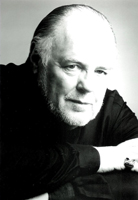 For his part, Gemignani is looking forward to working with both the opera and the musical-theatre folks. "They are all singers in their own rights and wonderful actors," he says. "It is all the musical theatre. Artists one and all."
For his part, Gemignani is looking forward to working with both the opera and the musical-theatre folks. "They are all singers in their own rights and wonderful actors," he says. "It is all the musical theatre. Artists one and all."The artists leading the company in the roles of Magnolia and Ravenal are Celena Shafer and Nathan Gunn. "[Celena] is one of the rising American opera stars, a beautiful young woman with a golden voice," Zambello says. "Since [Paul Gemignani] and I wanted to use Nathan—I've done about 10 shows with him, and I wanted to have that sound for Ravenal—I thought it was important to pair him with another opera singer. Of course, this music demands a different vocal style, especially for their music." (As a side note, Gunn and Shafer also appeared as Anthony and Johanna in the 2002 Lyric Opera of Chicago production of Sweeney Todd.)
Joe and Queenie have likewise been cast with opera performers. "Joe is Alvy Powell," Zambello continues, "whom I've done Porgy and Bess. He has a great authority and weight, a very commanding presence. Alteouise deVaughn is Queenie—she's sung a lot of the opera repertoire, [important] since she does so much in Act I, between 'Misery,' the Ballyhoo, and the women's trio." And opera legend Marilyn Horne makes an appearance in the tiny but crucial role of the Lady on the Levee at show's end.
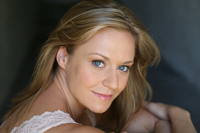 On the musical theatre side, Zambello had one important goal: "You want to make sure you are casting people with a personality who can fill that space and showcase them to their best." She feels she's done that by lining up Gavin Lee (Bert in Broadway's Mary Poppins, and soon to tour the country with the show) and Megan Sikora (currently in Curtains) as Frank and Ellie, the Cotton Blossom's comic leads.
On the musical theatre side, Zambello had one important goal: "You want to make sure you are casting people with a personality who can fill that space and showcase them to their best." She feels she's done that by lining up Gavin Lee (Bert in Broadway's Mary Poppins, and soon to tour the country with the show) and Megan Sikora (currently in Curtains) as Frank and Ellie, the Cotton Blossom's comic leads.Sikora, who will sing one of the show's classic comic numbers, "Life on the Wicked Stage," admits no previous familiarity with Show Boat, but is excited about playing someone light in this traditionally heavy piece. "I think it's important to the character not to get involved in the heavier story lines. For her story to mean something I think I almost need to be self absorbed in her own little dramas, like wanting to be the lead on the show boat, her relationship with Frank, and her personal feelings toward the others on the boat. I think that keeps it honest. The funny is just written in! It's much easier when you don't have work hard to make the material good."
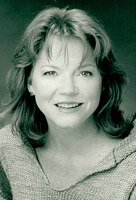 Cap'n Andy will be Jonathan Hadary, who's currently starring on Broadway in Monty Python's Spamalot, and Parthy Ann will be Becky Ann Baker, who played Sara Jane Moore in the 2004 Roundabout Theatre Company revival of Assassins. Baker's looking forward to the experience, but does have one regret: "I'm just sorry that Parthy doesn't sing at all," she says. (When Elaine Stritch played the role in Harold Prince's 1994 revival, she got to sing "Why Do I Love You?", but the character—which was originated by the great comic actress Edna Mae Oliver—is traditionally almost entirely songless.) "She's just wonderfully bossy and totally in charge. I see her as the great CEO of her husband's company, so she has to keep everyone in order. A positive choice for her curmudgeon-like behavior. She adores her husband and daughter. She's definitely the caretaker of the family."
Cap'n Andy will be Jonathan Hadary, who's currently starring on Broadway in Monty Python's Spamalot, and Parthy Ann will be Becky Ann Baker, who played Sara Jane Moore in the 2004 Roundabout Theatre Company revival of Assassins. Baker's looking forward to the experience, but does have one regret: "I'm just sorry that Parthy doesn't sing at all," she says. (When Elaine Stritch played the role in Harold Prince's 1994 revival, she got to sing "Why Do I Love You?", but the character—which was originated by the great comic actress Edna Mae Oliver—is traditionally almost entirely songless.) "She's just wonderfully bossy and totally in charge. I see her as the great CEO of her husband's company, so she has to keep everyone in order. A positive choice for her curmudgeon-like behavior. She adores her husband and daughter. She's definitely the caretaker of the family."In the key role of Julie LaVerne, the Cotton Blossom actress whose half-black parentage leads to a major turning point in the story, is Carolee Carmello. (The stalwart actress has appeared in many shows in New York and around the country; she's currently starring in the Broadway production of Mamma Mia!.) "She's the first person I cast," Zambello says of her. "She was the best person we could think of. She's certainly an acknowledged, big-Broadway name, and someone who brings a maturity and depth to the role that I'm very grateful to have." (In a delightful theatrical twist, Carmello's husband, Gregg Edelman, has been cast as Julie's husband, Steve.)
In some ways, Carmello's casting represents a return to Show Boat's roots: Julie was originated by the white actress Helen Morgan, the image of whom sitting on a piano and crying her heart out in song became one of the 1920s' most iconic theatre images. But in both the 1983 and 1994 Broadway revivals, Julie was played by light-skinned black actresses. (Lonette McKee originated the role in both productions.)
"It's tricky when you're casting the piece," Zambello admits. "The whole point of the show is that no one's supposed to know Julie has any African-American blood. That's the whole plot-turning moment, and [the miscegenation scene] is one of the best book scenes ever written. Everything changes at that point. Everything about this idyllic world is catapulted into something that is cataclysmic for each and every character. In casting [Carmello], I knew she has the dramatic sensibility to pull off the role, and I think she's going to be great."
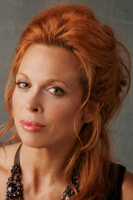 Of the opportunity to play the role, Carmello says, "I am just grateful to have a chance to sing this music. I hope people will be open to it—I can't really control that. I can understand both ways of casting the role. I really do feel lucky to have a crack at such a classic in such an amazing setting."
Of the opportunity to play the role, Carmello says, "I am just grateful to have a chance to sing this music. I hope people will be open to it—I can't really control that. I can understand both ways of casting the role. I really do feel lucky to have a crack at such a classic in such an amazing setting."Gemignani says he feels the same way, and thinks that, despite the gulf between the era of Show Boat's writing and today, the writing of classics like Show Boat remains crucial. "John Adams is writing for the opera. So did Wagner and Mozart. The progression in music comes from the effect on the ones writing today by the ones who wrote before. In my opinion, this does not diminish the original. Yet, I think it does inform the new."
"I do think showing this kind of material to a new generation of audiences is important," Carmello says. "We don't want to forget how far we've come in a hundred years, or how much further we can go to improve this country's race relations. I think the success this year of South Pacific is a case in point. The topic can still be controversial and moving all these decades later."
Zambello's staging will likewise meld old and new, with period costumes (Gregg Barnes is the consultant) and pen-and-ink-style projections (designed by S. Katy Tucker) helping set the scene. This is not surprising, as the director sees everything about the show as detailing the past's complex relationship to the present.
"For me, it's the kind of piece where, when you're working on new musicals, you always go back to this for what it's taught us," Zambello says. "The conditional love song. How to weave a complex plot with multiple characters and multiple subplots. Of course it's flawed by our standards now, but I still think it holds up. It's the launching of American musical theatre, it's the first great American musical, because it tells a story. It leaves behind the era that came before. I don't think we could have had any of the complex writings that came later without this piece."
Why are you looking all the way down here?
For more articles by Matthew Murray, click the links below!
Previous: Ticky Ticky Tock... Please Make it Stop!
Next: An Uncomfortable Visit to the Boundaries of Show Business
Or go to the Archives
[Broadway Ad Network]
[Broadway Ad Network]

If you would like to contact us, you can email us at feedback@
broadwaystars.com
[Broadway Ad Network]
[Broadway Ad Network]

- July 15: Harry Connick, Jr. in Concert on Broadway - Neil Simon
- Sept. 28: Brief Encounter - Studio 54
- Sept. 30: The Pitmen Painters - Samuel J. Friedman Theatre
- Oct. 3: Mrs. Warren's Profession - American Airlines Theatre
- Oct. 7: Time Stands Still - Cort Theatre
- Oct. 12: A Life In The Theatre - Schoenfeld Theatre
- Oct. 13: Bloody Bloody Andrew Jackson - Bernard Jacobs Theatre
- Oct. 14: La Bete - The Music Box Theatre
- Oct. 21: Lombardi - Circle In The Square
- Oct. 25: Driving Miss Daisy - John Golden Theatre
- Oct. 26: Rain - A Tribute To The Beatles On Broadway - Neil Simon Theatre
- Oct. 31: The Scottsboro Boys - Lyceum Theatre
- Nov. 4: Women On The Verge Of A Nervous Breakdown - Belasco Theatre
- Nov. 9: Colin Quinn Long Story Short - Helen Hayes Theatre
- Nov. 11: The Pee-Wee Herman Show - Stephen Sondheim Theatre
- Nov. 13: The Merchant of Venice - The Broadhurst Theatre
- Nov. 14: Elf - Al Hirschfeld Theatre
- Nov. 18: A Free Man Of Color - Vivian Beaumont Theater
- Nov. 21: Elling - Ethel Barrymore Theatre
- Dec. 9: Donny & Marie: A Broadway Christmas - Marquis Theater
- Jan. 13: The Importance of Being Earnest - American Airlines Theatre
- Mar. 3: Good People - Samuel J. Friedman Theatre
- Mar. 6: That Championship Season - Bernard B. Jacobs Theatre
- Mar. 11: Kathy Griffin Wants a Tony - Belasco
- Mar. 17: Arcadia - Barrymore Theatre
- Mar. 20: Priscilla Queen Of The Desert The Musical - The Palace Theatre
- Mar. 22: Ghetto Klown - Lyceum Theatre
- Mar. 24: The Book Of Mormon - Eugene O'Neill Theatre
- Mar. 27: How To Succeed In Business Without Really Trying - Al Hirschfeld Theatre
- Mar. 31: Bengal Tiger at the Baghdad Zoo - Richard Rodgers Theatre
- Apr. 7: Anything Goes - Stephen Sondheim Theatre
- Apr. 10: Catch Me If You Can - The Neil Simon Theatre
- Apr. 11: The Motherf**ker with the Hat - Gerald Schoenfeld Theatre
- Apr. 14: War Horse - Vivian Beaumont Theater
- Apr. 17: Wonderland: A New Alice. A New Musical Adventure. - Marquis Theatre
- Apr. 19: High - Booth Theatre
- Apr. 20: Sister Act - The Broadway Theatre
- Apr. 21: Jerusalem - Music Box
- Apr. 24: Born Yesterday - Cort Theatre
- Apr. 25: The House of Blue Leaves - Walter Kerr Theatre
- Apr. 26: Fat Pig - Belasco Theatre
- Apr. 27: Baby It's You! - Broadhurst Theatre
- Apr. 27: The Normal Heart - Golden Theater
- Apr. 28: The People in the Picture - Studio 54
- Apr. 28: The End of The Season
- Jun. 12: The 65th Annual Tony Awards - Beacon Theatre
- June 14: Spider-Man, Turn Off The Dark - Foxwoods Theater
- June 21: Master Class - Samuel J. Friedman
